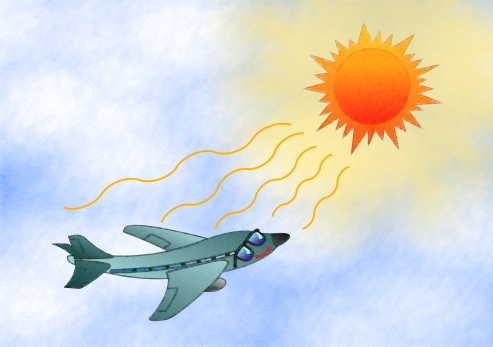Ultraviolet radiation at high altitude
Ultraviolet radiation at high altitude
HONG Chi-yuen
While flying at 10,000 m aloft, have you ever experienced watching sunrise or sunset through the aeroplane's window? Though it might be exciting to have a view of the sun in the open sky at this high altitude, has it ever occurred to you that without proper protection, the level of ultraviolet (UV) radiation you are exposed to could be much higher than that at ground level.
Ultraviolet radiation is the electromagnetic radiation of the sun beyond the violet end of visible light, which our eyes cannot see. UV radiation is commonly divided into UVA, UVB and UVC. At higher altitudes, the thinner atmosphere will filter out less UV radiation. For every 1000 m increase in altitude, the UV radiation level will increase about 12%.
Clinical evidence has shown that UVB is harmful to the crystalline lens of the eyes and epidemiological studies have shown that certain types of cataract are associated with high exposure to UV radiation, especially UVB radiation. Fortunately, scientists are well aware of the intense UV at cruising heights so that protective actions have already been taken for the safety of the crew and travellers. For example, most aircraft windows use specialized material that effectively blocks out the majority of UV radiation. So, the next time when you travel on an aeroplane and the cabin crew ask you to lower the window shade, you should appreciate their extra effort in protecting you from UV radiation and ensuring the safety and comfort of all passengers.

References:
[1] Ultraviolet Radiation: Hazards in Aviation, American Optometric Association.
[2] Ultraviolet radiation and health, World Health organization (https://www.who.int/uv/uv_and_health/en/)
[1] Ultraviolet Radiation: Hazards in Aviation, American Optometric Association.
[2] Ultraviolet radiation and health, World Health organization (https://www.who.int/uv/uv_and_health/en/)